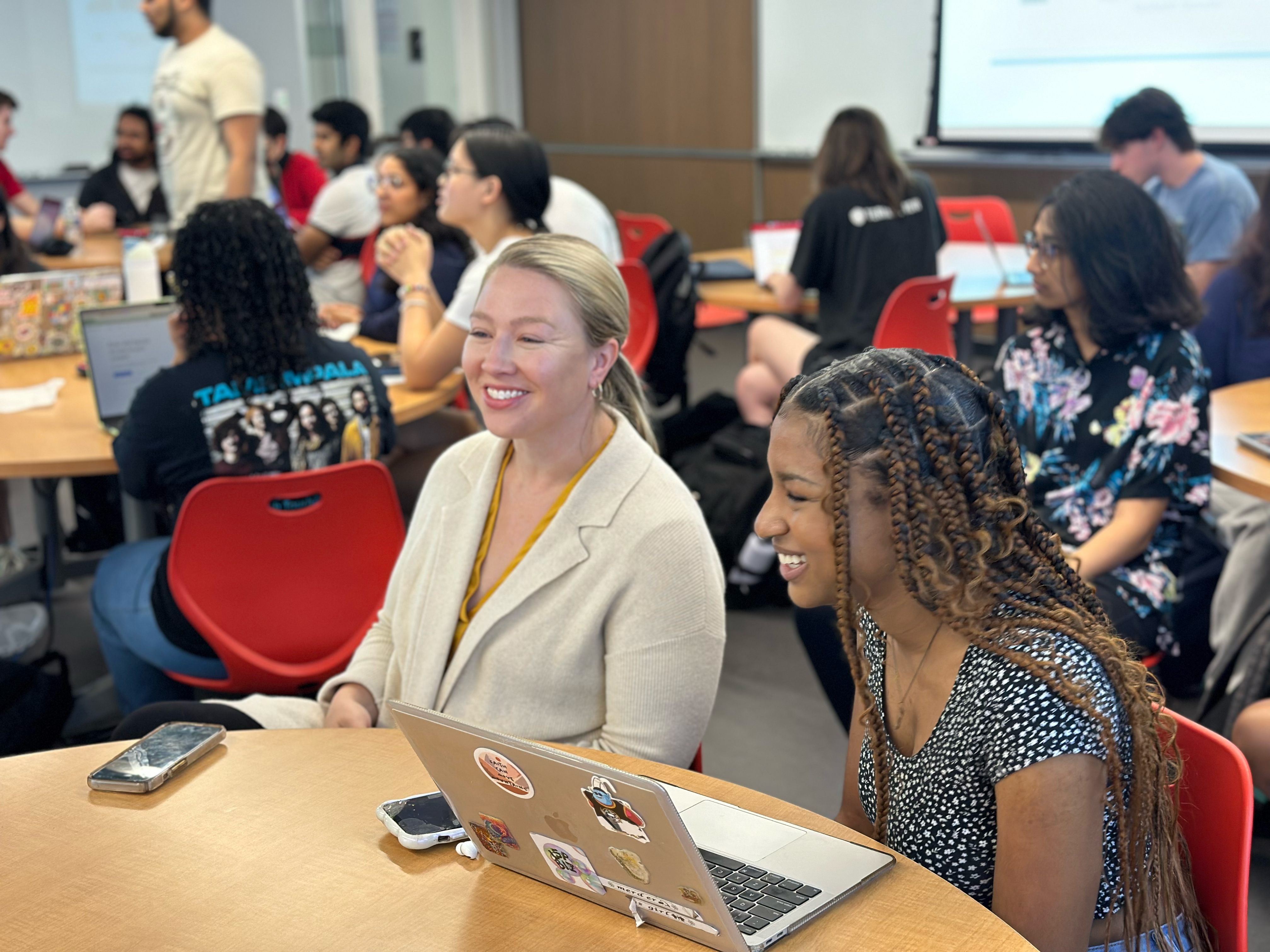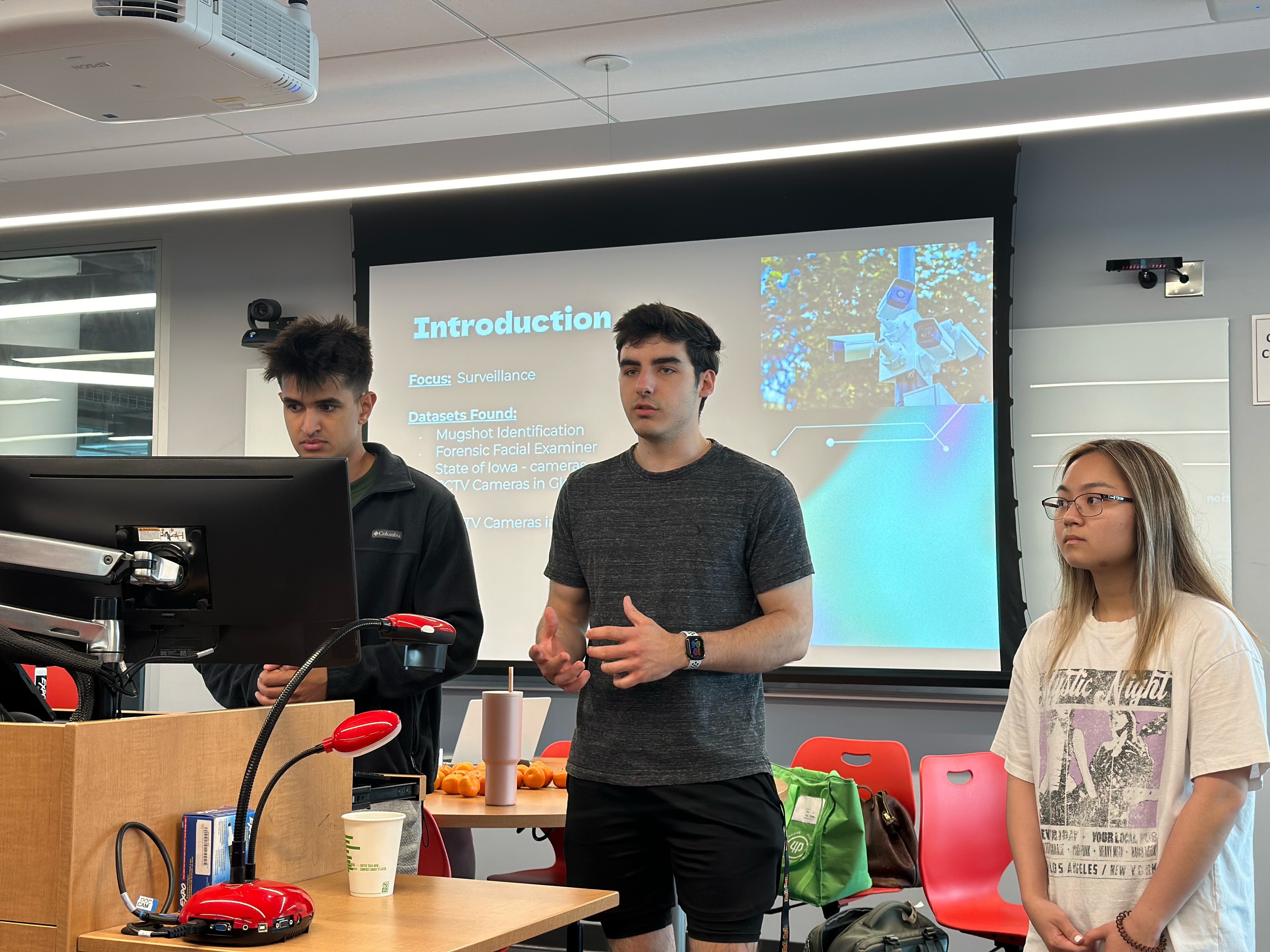Examining Data Science Through an Equity Lens
The Computer Science and Women, Gender, and Sexuality Studies departments collaborated on a new cross-listed course.
Issues of race and gender have shaped computing since its beginning, now with increasing debate over algorithmic bias, surveillance, data privacy and more. As technology evolves to play a larger role in everyday life, it’s even more important that people understand how technology can reinforce systems of power.
This spring semester in a new course cross-listed in the University of Maryland’s Computer Science and Women, Gender, and Sexuality Studies (WGSS) departments, students examined the relationships between digital technology, power structures and social justice. The idea for the course, listed as CMSC115/WGSS115: Gender, Race and Computing, started with Elias Gonzalez (B.S. '17, computer science; M.Ed. ’18, curriculum and instruction), a lecturer in the Department of Computer Science and Break Through Tech curriculum innovation lead.
“For computer science students, the goal was to expose them to other ideas and other students outside of their computer science bubble,” Gonzalez said. “For the WGSS students and other majors, our goal was to show them that tech is an option for them—and that they can apply tech to whatever area they want to study.”
Another goal of the course was to open up opportunities for more women and nonbinary students to explore tech career paths, which is why Gonzalez says the collaboration with WGSS was “a perfect fit.” After developing the curriculum and laying the necessary groundwork, Computer Science Adjunct Lecturer Jennifer Manly and WGSS Associate Professor Alexis Lothian co-taught the course.
“Research shows that women are drawn to computer science for ways that they can use tech to impact the world around them and make a difference,” Manly said. “And that’s what this course was to me—it was a way for us to offer something that appeals to students who are interested in making a difference and to offer up computer science in an approachable way.”
Forty-four students enrolled in the course, representing 22 majors and eight UMD colleges and schools. Gonzalez worked with WGSS faculty members to structure the course so that computing experience was not a prerequisite. Throughout the semester, students learned data science basics and how to ask thoughtful questions about data and understand its fallibility. The curriculum applied an equity lens to data science by examining how systemic racism and sexism in computer science impact the everyday use of digital technology.
For every technical component included in homework assignments, Manly walked the class through an example in class. The semester culminated in a final project where students worked together to identify and analyze a publicly available dataset related to gender or race and create corresponding data visualizations.
Sophomore mathematics major Helen Duan and her teammates found datasets on labor conditions and child labor in the clothing industry and used Tableau to create graphs and infographics that showed their findings.
“I would recommend this course to other students because the lecture material was really interesting and also applicable to my studies in STEM. I think these courses are necessary for promoting social justice and embedding it in our work,” Duan said. “The class definitely made me more aware of how many things are affected by hidden biases. I know I’ll be more cautious in the future when collecting data and drawing conclusions.”
Teaching students to be more conscious consumers of technology was an important outcome for Manly and Lothian.
“Some of these students are going to go on to work in computer science and some are not, but all of us will be using tech,” Manly said. “All of us are using technology all the time, so leaving as more conscious consumers is a fantastic outcome.”
Moving forward, Gonzalez plans to explore new opportunities for cross-listed computing courses.
“I would love to see more courses like CMSC115,” he said. “I envision it as ‘tech plus X,’ where students can apply technical skills to another field they’re interested in. I would love to work with other departments to help create computing classes where needed and serve the greater population of UMD.”











